The safety of both patients and medical staff inside an ambulance is a prime consideration for ambulance makers when they are putting together a new rig. These manufacturers are employing a variety of measures and designs to ensure medics can provide the best in patient care yet still keep themselves and patients as safe as possible.
Robb Dennert, senior director of engineering at REV Ambulance Group, says all REV ambulance brands concern themselves with designing their rigs with the best in safety and comfort for both the medics and patients inside the module. He says that REV has what it calls a “safety roadmap” for its ambulances across the brands that includes bench and sled testing of the module and its elements, safety harnesses and air bags, meeting or exceeding Society of Automotive Engineers (SAE) standards for the structure and strength of the patient compartments, and the selection and design of materials used in the walls and frames of the modules.
Dennert points out that all REV ambulances use IMMI’s Per4Max® four-point seat belt harnesses that allow for a medic’s freedom of movement while still belted in. “Per4Max harnesses have four retractors that allow for a full range of movement, even while performing CPR while standing,” he says. “In the event of an accident, the webbing in the belt allows for a controlled deceleration, absorbing energy and protecting the wearing occupant.”
The next step in REV’s safety roadmap, Dennert notes, is the optional IMMI RollTek® air bags offered across all its brands. “They are strategically placed to prevent head, shoulder, or arm contact in case of a rollover accident,” he says, “and work in concert with the Per4Max harnesses. We offer them adjacent to the rear-facing attendant seat, along the sides of the CPR/action seat area close to countertop edges and overhead cabinets, and in the squad bench area depending on the configuration.”
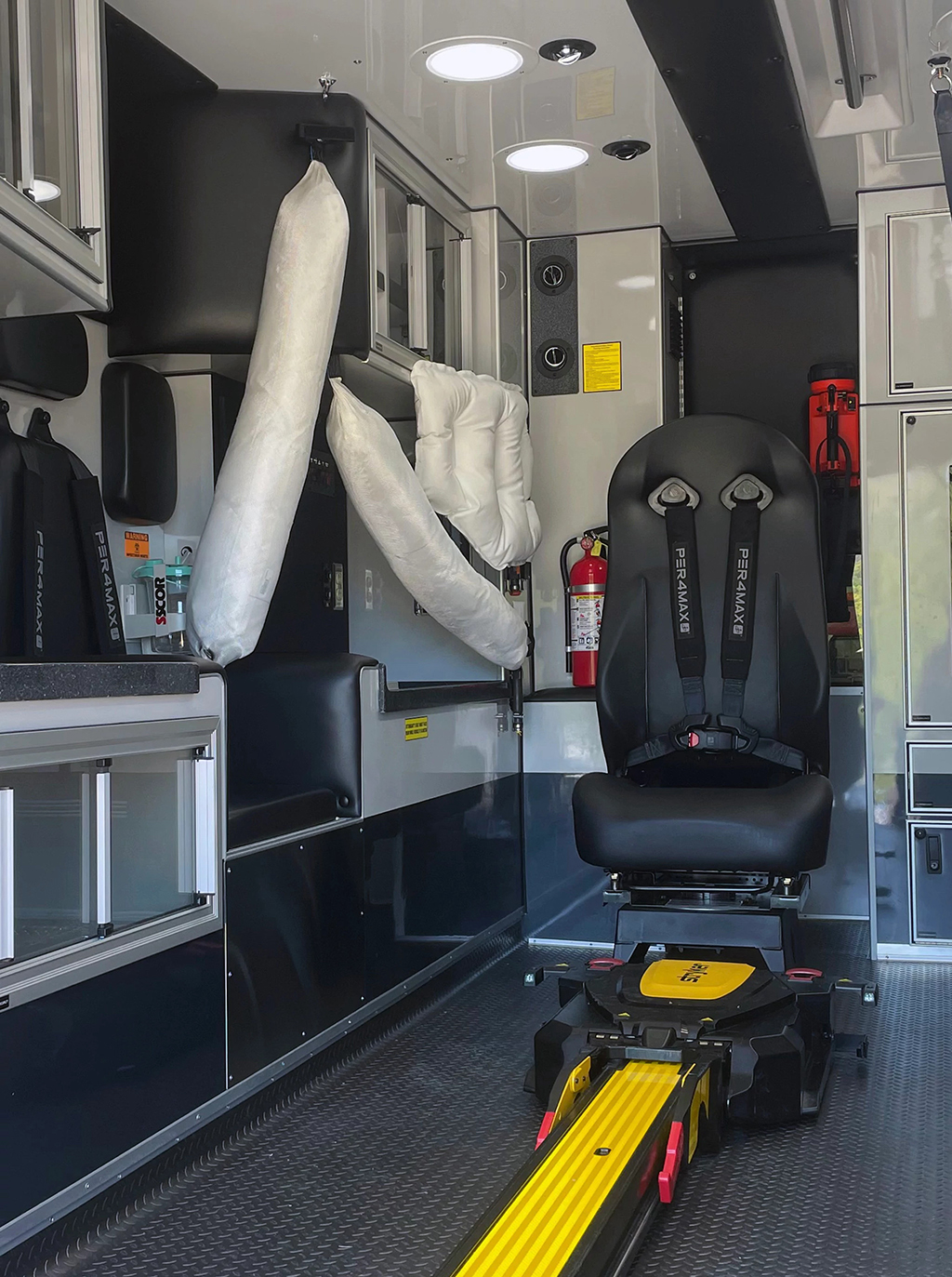
Scott Barnes, vice president of sales for the REV Ambulance Group, says that the MBrace® system is exclusive to Horton Emergency Vehicles, where air bags are built into the four-point seat belt harness that allows for movement while a medic is strapped in. “In the event of an accident, it provides protection for the occupant from frontal impact and protects the head and neck in particular,” Barnes points out.
He says that REV offers emergency door release on all three entry doors in the patient compartment across all its brands of ambulances. In the Wheeled Coach, Road Rescue, and Leader brands, it is called Safe Pass. The Horton brand calls it Emergency Door Release, and the AEV brand calls it E-Release. “In the case of a rear strike, the crew and patient have to get out, so there’s a release mechanism at the top and bottom of each door, manual levers that rotate the lock to open the door,” Barnes observes. He adds that REV Ambulance Group is in year three of its six-year safety roadmap and continues to review elements that can be refreshed or updated. “We always are looking at how we can do things better,” he says.
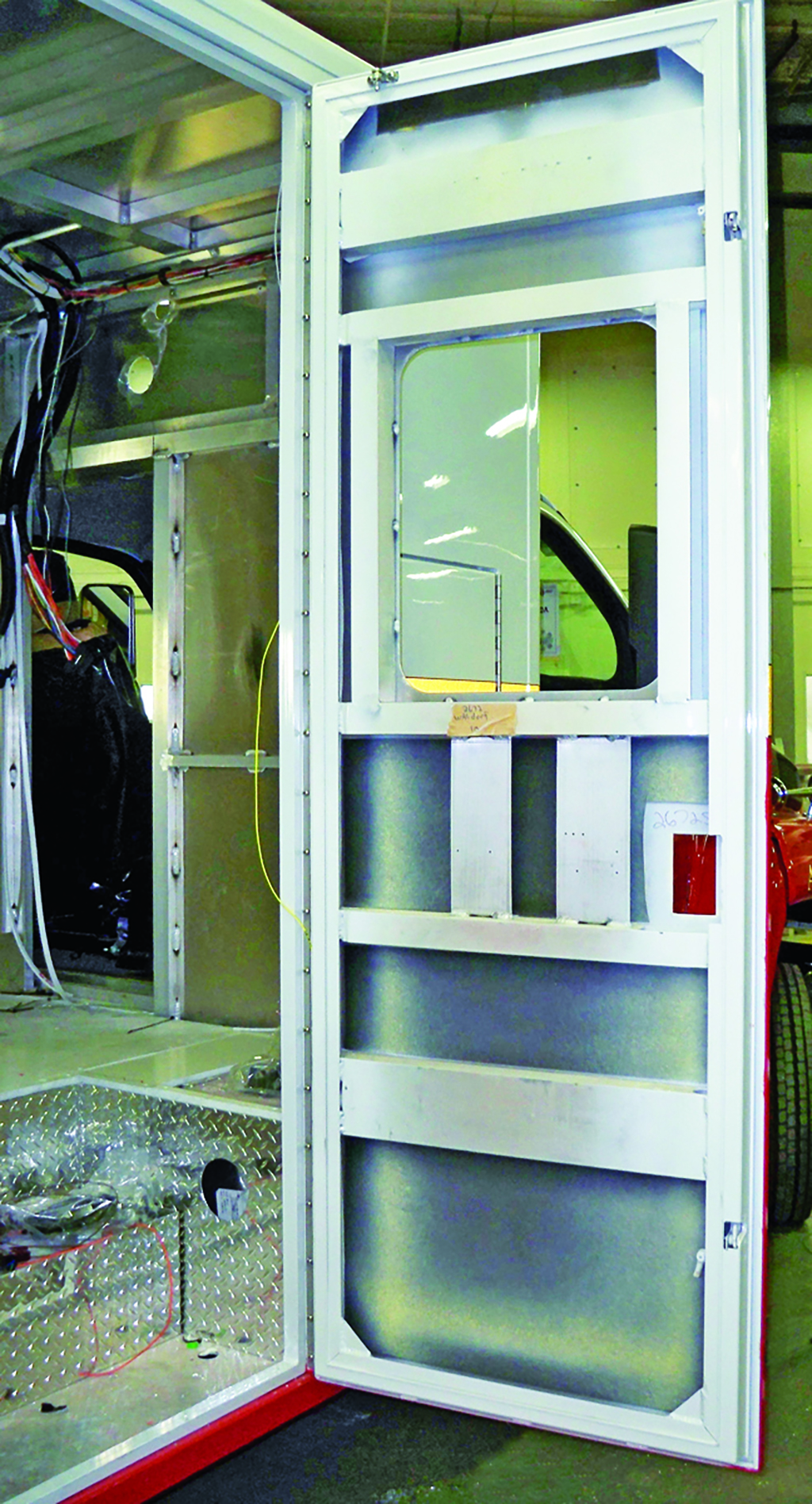
Chad Newsome, national sales manager for P.L. Custom Body and Equipment Company, notes that his company designs its ambulances with the safety of the attendant and patient in mind through its PL Advantage, a program that provides for side impact safety through a robust framework, and its Medic In Mind interior. Newsome says P.L. Custom uses full length 2- x 5- x 0.125- inch aluminum side impact rails welded into the upper and lower body and door frames. “That’s an industry exclusive for entrance and compartment doors,” he observes.
Newsome says seat belt mounting plates are A inch thick and are welded into the body frame to secure every seating configuration. The exterior of the patient module has an extruded aluminum framework on 12-inch centers, with side and roof sheets of single piece 1.25-inch aluminum, meaning no seams, he adds. P.L. Custom also uses 3M Thinsulate thermal and acoustical body insulation in the walls, ceiling, and doors along with Reflexite super insulation for an increased R-value.
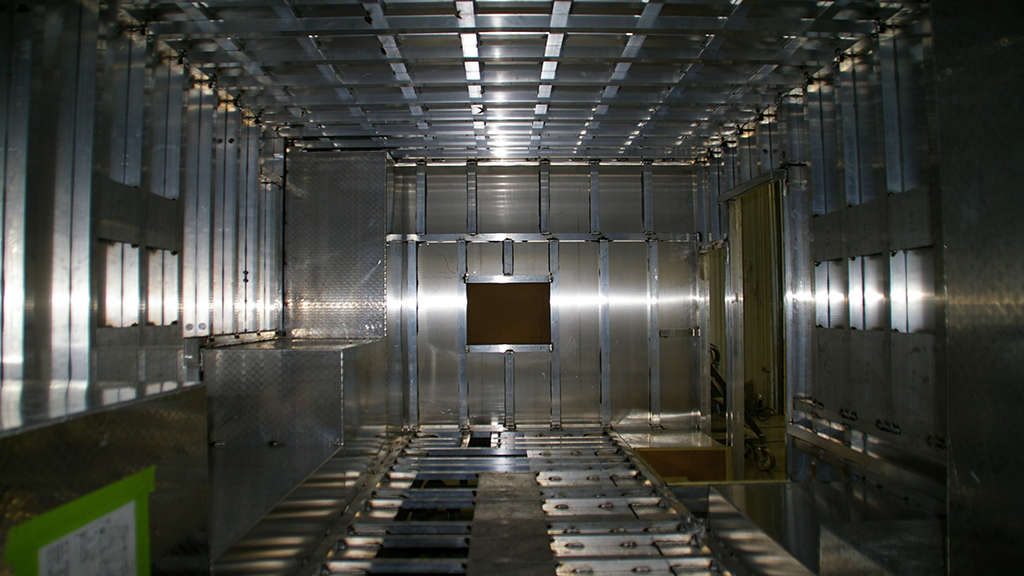
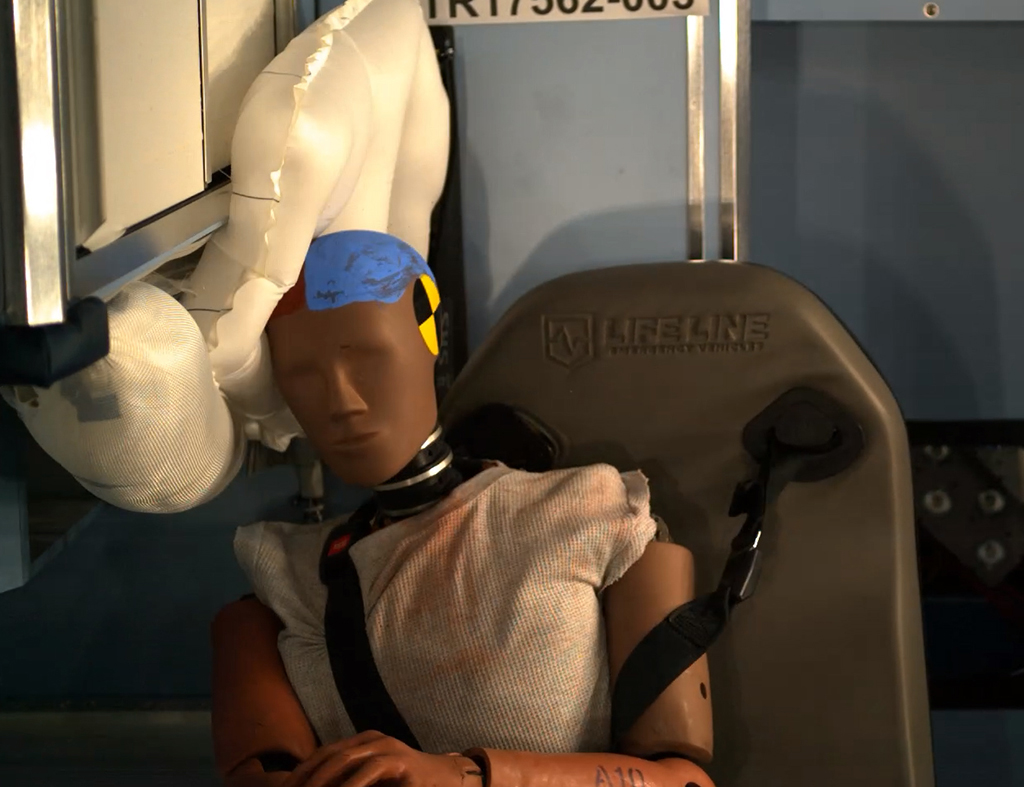

The P.L. Custom Medic In Mind interior offers a layout that supports easy access to everyday equipment from a seated position on either side of the vehicle, Newsome says. “Keeping necessary equipment, functions,and switches within arm’s reach allows the attendant to remain seated and still attend to the patient,” he points out. P.L. Custom’s interiors are built with upper cabinets fore and aft of the CPR seat constructed on 45-degree angles to prevent head impact when seated in that location; on the curb side, the 45-degree upper cabinet provides safe access to gloves and auxiliary switches, he says. In addition, all countertop edges and vertical corners are designed with a radiused edge to prevent injury in the event of an impact.
Paul Marshall, sales and marketing manager for Osage Ambulances, says Osage has been building extra strengthened patient modules for many years, calling them “a seamless box with the strength of an extrusion.” Marshall points out that Osage’s patient modules are built with 2- x 2-inch aluminum on 12-inch centers on the sides and across the top, with 1- x 2-inch aluminum on 12-inch centers running lengthwise along the top. “The box is assembled with Osage custom corner extrusions that are fully welded for a completely seamless body,” he says.
Marshall adds that a popular design feature being added to more ambulances these days is a second switch panel on the curb side of the interior that allows an attendant the ability to adjust lighting, fans, and other electrical equipment while staying seated and protected by a harness.
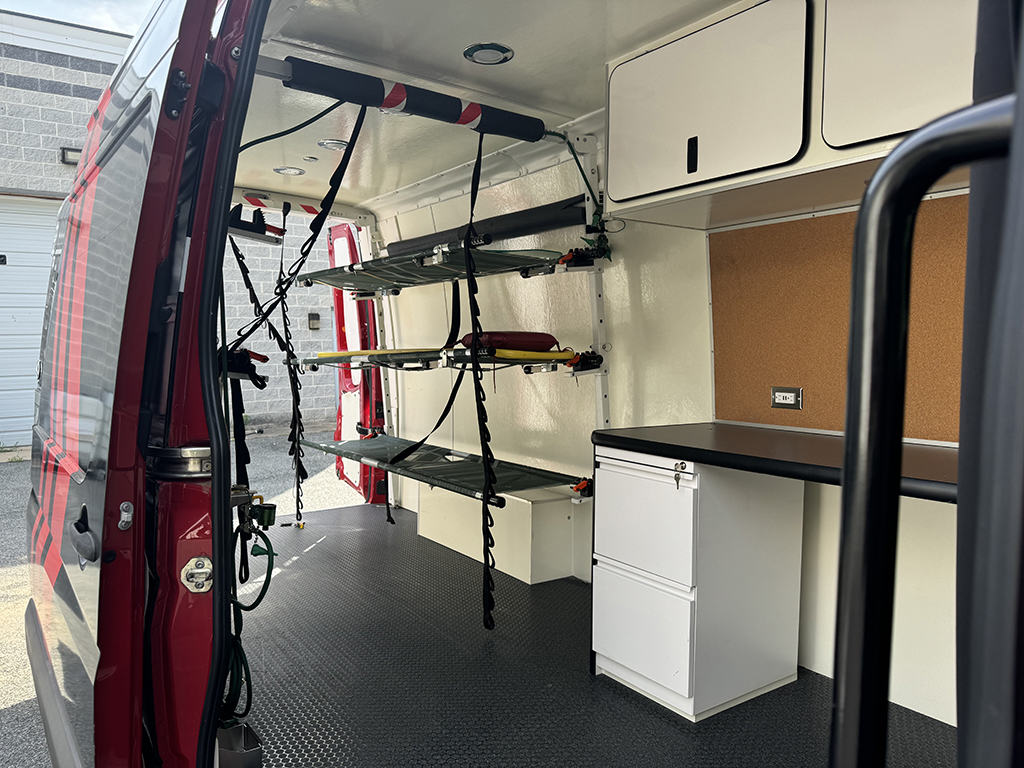
Dan Ingersoll, engineering manager for Life Line Emergency Vehicles, says his company has been focusing on safety inside the box for a number of years, most recently getting its four-point seat belt harness certified. “We’ve added rollover protection through curtain and barrier air bags at the attendant and CPR seating positions,” Ingersoll says, “as well as at the foot end of the squad bench.”
Ingersoll notes that Life Line’s units are customized to meet the requirements of each customer. “In terms of the safety of the module, we’ve added a tubular construction into the sidewalls to give greater protection in the event of an accident,” he says, “and also have installed heavier duty door frames. We continue to look to improve both what we do and how we do it, looking at all the design elements and improving them for safety and efficiency, while retaining quality.”
Vanessa Bomboir, U.S. director of marketing for Demers, says examples of how Demers provides long-term comfort and safety include a patient module with sturdy aluminum construction, how Demers Ambulances layouts facilitate an environment where EMTs can stay belted, a Door Forward Design that ensures medics remain closer to their patient, and an Arctic Range HVAC system option for more efficient cooling. She adds that all Demers Ambulances are built to three United States standards: KKK-1822-F, CAAS GVS, and FMVSS.
Safety elements of Demers ambulances, she points out, include an aluminum “roll cage within a roll cage” structure installed as a single piece and bolted into the substructure, the Demers mobility seat and mobility track, a heads-up console on the dashboard, Clever Cabinetry compartments that are pull-tested and sled-tested to enhance occupant safety, underfloor edge heating for the cot and patient, and a step-down rear area with red/green lights that provide visibility for medics when stepping out into the dark.
Bomboir adds that Demers recently introduced the eFX Action Seat (see cover story) within its eFX all-electric ambulance that promotes freedom of movement and accessibility to patients and equipment while the medic is belted in a four-retractor single-click system that allows the medic to stand without unbuckling. She says the seat is stabilized to help medics perform critical tasks and that the new design enables medics to maneuver using their legs, releasing their hands to care for the patient.
Amit Kapoor, president of First Line Technology, says his company makes the AmbuBus frame kit that holds up to nine stretchers for a maximum of 18 supine patients, which is installed in a customer’s vehicle of choice. “We’ve improved the bracketing system and have now developed AmbuBus QRT that can handle three to six patients and will fit into a Sprinter-type van,” Kapoor says. First Line also has introduced the Baby Pod 20, he notes, which was developed to transport infants. “It’s made of carbon fiber so it’s lightweight and easy to transport,” he says, “and can be moved from an ambulance to a stretcher to a fixed or rotary wing aircraft without removing the infant from the pod.”
ALAN M. PETRILLO is a Tucson, Arizona- based journalist, the author of three novels and five nonfiction books, and a member of the Fire Apparatus & Emergency Equipment Editorial Advisory Board. He served 22 years with the Verdoy (NY) Fire Department, including in the position of chief.

